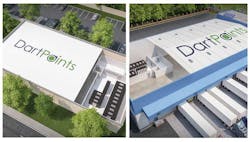Six Ways Edge Computing is Changing the Digital Ecosystem Landscape
In addition to highlighting the essential roles of digital infrastructure, the pandemic also exposed a lack of high-performing, affordable internet infrastructure. Networks driven by a few centralized hyperscale locations simply couldn’t meet the immediate and explosive demand for bandwidth. From applications such as AI, autonomous vehicles, telehealth, and agriculture, the existing architecture couldn’t support the level of growing demand. To solve for this, networks leaned into decoupling and pushing capabilities out to the edge where requests could be processed closer to the users.
What the pandemic also exposed was a nation-wide digital divide. While demand for bandwidth skyrocketed, most content remained housed in Tier 1 markets; anyone outside those areas relied – and often still rely – on third-party networks to carry traffic across the internet. This put smaller carriers in Tier 2 and Tier 3 markets at a disadvantage, as they relied on backhaul connections to important content, resulting in higher latency and transit costs.
To solve for this, providers turned to edge computing technologies to enable data storage, processing, and execution to smaller markets — helping to bridge the digital divide. Placing data at the edge, where it can be exchanged and used, has created network ecosystem agglomeration opportunities between carriers, content, and applications. The chief objective of an edge data center is to make operations to be more agile, enter new markets, and deliver services closer to the end user. Here are six ways edge computing is doing just that – and changing the digital ecosystem landscape.
1. Decentralization
Edge compute is essentially a shift from a centralized compute model to a distributed compute model. While traditional cloud computing relies on centralized data centers, the distributed edge moves data closer to network endpoints. Since information doesn’t have to travel as far, it improves both bandwidth and latency.
2. Composable Infrastructure
At its core, composable infrastructure is simply infrastructure on demand. More specifically, it is the abstraction of compute, storage, and networking from physical locations and hardware to be treated as services managed through software. Truly composable infrastructure is vendor neutral, capital efficient, and allows interconnection between many providers for optimal connectivity and low latency.
3. Network Neutral Colocation
Carrier-neutral edge colocation data centers keep data closer to users. These facilities operate independently of any providers and allow interconnection between many colocation and interconnection providers. The ability to connect with multiple carriers enables redundancy, optimal uptime, and cost efficiency. Additionally, it improves data delivery and allows adjacent developing and underserved markets to leverage Tier 1 market advantages.
4. Peering
Some digital content providers are enabling local carriers to gain access to internet exchange points through local peering. This exchange of data from one network to another allows network carriers, operators, and ISPs to exchange data quickly and frequently. IXPs like Bridge IX™ enable enterprises, content delivery networks and internet service providers to interconnect directly with each other. This provides the direct access to the networks they need with improved network performance, increased resiliency, and reduced connectivity costs. Peering is revamping the centralized model for the internet, enabling it to work optimally even amid heavy traffic demands.
5. Containerization
In simple terms, containerization is a form of virtualization in which applications are bundled so they can more easily be transferred between environments. Edge containers, and containerization as a service, specifically, allow organizations to decentralize services by moving key components of their application to the edge of the network. By shifting intelligence to the edge, organizations can achieve improved resiliency and better response times. Containerization eases workloads and makes it simpler to run applications in any environment.
6. Emerging Tech
Advancing technologies like 5G, Artificial Intelligence, IoT, and Virtual Reality require a change in how data is processed and delivered as they cannot function optimally in a high-latency environment. Edge computing delivers faster processing at the source of the data – transforming virtually every economic sector.
The edge and what the edge represents is many different things to many different people – there’s the network edge, compute edge, the edge of the enterprise, far edge, near edge, and more. But more importantly than defining the edge is defining how the edge can bridge that gap between traditional data centers and facilitate a thriving partner ecosystem that cultivates interconnection and empowers network expansion.
Edge computing technology has the power to transform virtually every industry by delivering faster processing at potentially lower costs. Although most organizations are aware that the edge enables digital transformation, it’s less well-known that partnering with an edge service provider could accelerate that process.
The ideal digital infrastructure provider brings data storage and processing directly to the edge. This reduces latency, improves internet performance, and provides cost-effective access to global internet networks.
Brad Alexander is Chief Technology Officer for DartPoints. Discover how DartPoints‘ edge data centers and IXs are transforming the way data traffic is managed, processed, and fulfilled – bridging the digital divide and changing the digital ecosystem landscape.


